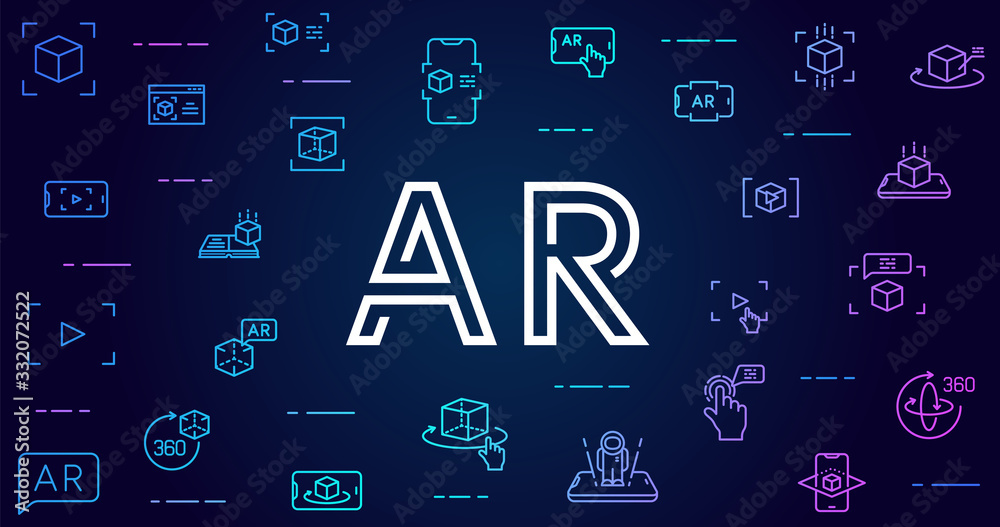1: Introduction to Mobile AR Development
1.1 Overview of Mobile AR
1.1.1 What is mobile AR?
1.1.2 Differences between mobile AR and other AR platforms
1.2 Key Technologies for Mobile AR
1.2.1 Introduction to ARCore (Android) and ARKit (iOS)
1.2.2 Unity as a cross-platform AR development tool
1.3 Setting Up Development Environments
1.3.1 Configuring Android Studio and Xcode for ARCore and ARKit
1.3.2 Installing Unity and setting up AR development environments
2: ARCore and ARKit Essentials
2.1 Introduction to ARCore
2.1.1 ARCore SDK: features and capabilities
2.1.2 Developing your first Android AR app with ARCore
2.2 Introduction to ARKit
2.2.1 ARKit SDK: features and capabilities
2.2.2 Developing your first iOS AR app with ARKit(Ref: IOS application using React Native +Typescript+Swift)
2.3 Cross-Platform Considerations for Mobile AR
2.3.1 Challenges and strategies for cross-platform AR development
2.3.2 Using Unity to develop both ARCore and ARKit apps
3: Tracking and Anchoring in Mobile AR
3.1 Understanding Motion Tracking and Environmental Awareness
3.1.1 How mobile AR tracks device position in the real world
3.1.2 ARCore and ARKit tracking techniques (light estimation, motion tracking)
3.2 Anchoring Virtual Objects in the Real World
3.2.1 Creating stable anchors for objects in AR
3.2.2 Persistence of AR content across sessions
3.3 World Mapping and Surface Detection
3.3.1 Mapping environments and detecting surfaces (walls, floors)
3.3.2 Plane detection in AR for placing virtual objects
4: Interactions and User Experience in Mobile AR
4.1 User Interaction in Mobile AR
4.1.1 Techniques for intuitive interaction in AR environments
4.1.2 Using touch gestures and device sensors (gyroscope, accelerometer)
4.2 Building AR User Interfaces
4.2.1 Designing AR-specific interfaces and overlays
4.2.2 Creating responsive menus and HUDs in AR applications
4.3 Interactive Object Manipulation
4.3.1 Allowing users to interact with and manipulate virtual objects
4.3.2 Implementing drag, drop, and scale features
5: Working with 3D Assets in Mobile AR
5.1 Importing and Using 3D Models in AR
5.1.1 How to import 3D assets into ARCore, ARKit, and Unity
5.1.2 Optimizing 3D models for mobile AR performance
5.2 Animating Objects in AR
5.2.1 Implementing animations for virtual objects in AR
5.2.2 Using animation triggers based on user input or environment changes
5.3 Lighting and Shadows in AR
5.3.1 Creating realistic lighting effects in mobile AR
5.3.2 Dynamic lighting, shadows, and reflections in ARCore and ARKit
6: Real-World Interaction and Data Integration
6.1 Integrating AR with Real-Time Data
6.1.1 Displaying live data in AR (e.g., weather, GPS, or IoT data)
6.1.2 Integrating external APIs and real-world data streams into AR apps
6.2 Geolocation-Based AR
6.2.1 Using GPS data for location-based AR experiences
6.2.2 Implementing AR apps that change based on geographic location
6.3 Object Recognition and Tracking in AR
6.3.1 Using ARCore and ARKit for image and object recognition
6.3.2 Developing AR apps that interact with specific physical objects
7: Performance Optimization for Mobile AR
7.1 Optimizing AR Apps for Mobile Devices
7.1.1 Techniques for optimizing performance on Android and iOS
7.1.2 Reducing CPU, GPU, and memory usage for smooth AR experiences
7.2 Efficient Use of Mobile Sensors and Data
7.2.1 Optimizing sensor usage (camera, GPS, gyroscope) to minimize power consumption
7.2.2 Handling large-scale AR scenes on mobile devices
7.3 Testing and Debugging Mobile AR Applications
7.3.1 Tools and techniques for testing AR apps on multiple devices
7.3.2 Identifying and resolving common performance bottlenecks
8: Publishing and Future Trends in Mobile AR
8.1 Deploying AR Apps to App Stores
8.1.1 Preparing ARCore and ARKit apps for the Google Play Store and Apple App Store
8.1.2 App store submission guidelines for AR applications
8.2 Cross-Platform Distribution with Unity
8.2.1 Publishing AR apps developed in Unity across multiple platforms
8.2.2 Handling platform-specific features and limitations
8.3 Exploring Future Trends in Mobile AR
8.3.1 The role of 5G in mobile AR development
8.3.2 New hardware advancements and their impact on AR







Reviews
There are no reviews yet.